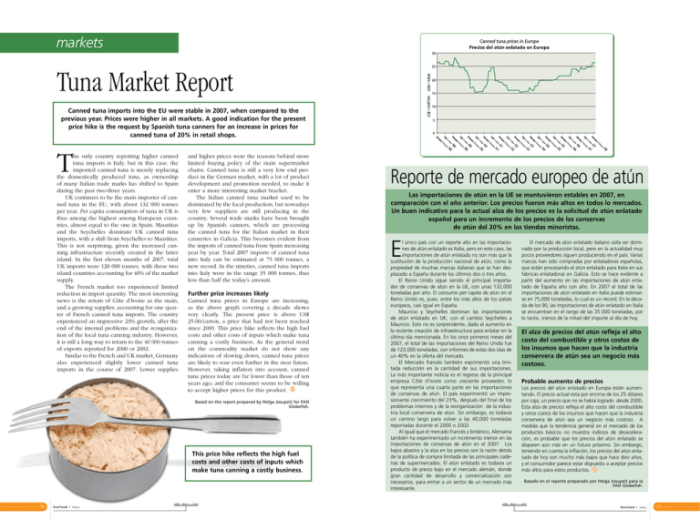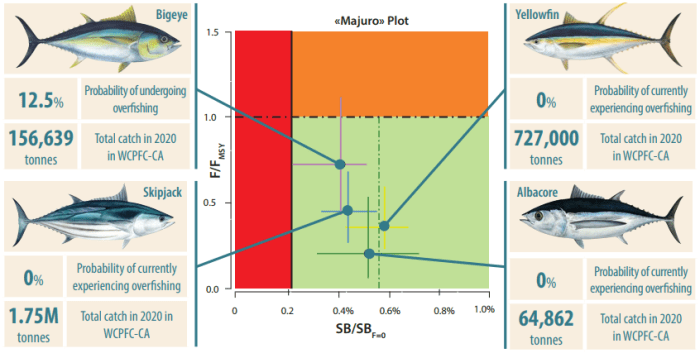Ode to a Large Tuna in the Market Analysis sets the stage for this enthralling narrative, offering readers a glimpse into a story that is rich in detail and brimming with originality from the outset. This comprehensive market analysis delves into the intricate world of large tuna, examining key trends, consumer preferences, supply chain dynamics, marketing strategies, pricing fluctuations, growth opportunities, and sustainability considerations.
Prepare to be captivated as we explore the fascinating realm of this majestic fish and its profound impact on the global seafood industry.
Market Overview: Ode To A Large Tuna In The Market Analysis
The global market for large tuna is experiencing a period of sustained growth, driven by increasing demand from both developed and developing countries. Key trends shaping the market include:
- Rising consumer awareness of the health benefits of tuna
- Growing popularity of sushi and other raw fish dishes
- Expansion of the middle class in emerging markets
- Increased demand for sustainable seafood
Competitive Landscape, Ode to a large tuna in the market analysis
The large tuna market is highly competitive, with a number of major players vying for market share. The top five players in the market are:
- Thai Union Group
- Mitsubishi Corporation
- Cargill
- Maruha Nichiro Corporation
- Dongwon Industries
Consumer Demand and Preferences
The target consumer base for large tuna is primarily composed of health-conscious consumers who are looking for a high-quality source of protein. Consumer preferences for large tuna include:
- Taste: Consumers prefer tuna that is firm, flavorful, and has a low fat content.
- Texture: Consumers prefer tuna that is tender and juicy.
- Sustainability: Consumers are increasingly concerned about the environmental impact of tuna fishing, and they are more likely to purchase tuna from sustainable sources.
Supply Chain Analysis

The supply chain for large tuna is complex and involves a number of different players, including fishermen, processors, distributors, and retailers. Key challenges in the supply chain include:
- Overfishing: The global tuna population is under threat from overfishing, and this is a major concern for the sustainability of the large tuna market.
- Illegal fishing: Illegal fishing is a major problem in the tuna industry, and it can lead to the depletion of tuna stocks.
- Seasonality: The supply of large tuna is seasonal, and this can lead to price fluctuations.
Marketing Strategies
The marketing strategies used by large tuna companies vary depending on the target market. However, some common strategies include:
- Advertising: Large tuna companies use a variety of advertising channels to reach their target market, including television, print, and online advertising.
- Public relations: Large tuna companies use public relations to promote their products and to build relationships with key stakeholders.
- Social media: Large tuna companies use social media to engage with their target market and to promote their products.
Pricing Analysis
The price of large tuna is influenced by a number of factors, including the size of the fish, the season, and the demand for tuna. In recent years, the price of large tuna has been relatively stable.
Factors Influencing Price Fluctuations
The following factors can influence price fluctuations in the large tuna market:
- Supply: The supply of large tuna is seasonal, and this can lead to price fluctuations.
- Demand: The demand for large tuna is influenced by a number of factors, including the health benefits of tuna, the popularity of sushi and other raw fish dishes, and the expansion of the middle class in emerging markets.
- Competition: The large tuna market is highly competitive, and this can lead to price fluctuations.
Growth Opportunities

The large tuna market is expected to continue to grow in the coming years. Key growth opportunities include:
- New market segments: There are a number of new market segments that are emerging for large tuna, including the health food market and the pet food market.
- New applications: There are a number of new applications for large tuna, including the use of tuna in sushi and other raw fish dishes.
- Emerging technologies: There are a number of emerging technologies that could help to improve the efficiency of the large tuna supply chain and to reduce the environmental impact of tuna fishing.
Sustainability Considerations

The large tuna industry is facing a number of sustainability challenges, including overfishing, illegal fishing, and the bycatch of other marine species. However, there are a number of steps that can be taken to improve the sustainability of the large tuna industry, including:
- Promoting sustainable fishing practices
- Reducing bycatch
- Protecting tuna habitats
Expert Answers
What are the key factors driving demand for large tuna?
Increasing consumer demand for high-quality protein sources, growing popularity of sushi and sashimi, and rising disposable incomes in emerging markets are among the primary factors fueling demand for large tuna.
How has the COVID-19 pandemic impacted the large tuna market?
The pandemic disrupted supply chains, leading to temporary shortages and price fluctuations. However, demand has since rebounded, driven by increased home cooking and the reopening of restaurants.
What are the major challenges facing the large tuna industry?
Overfishing, illegal fishing, and climate change pose significant challenges to the sustainability of large tuna stocks. Additionally, fluctuating fuel prices and geopolitical tensions can impact supply and pricing.